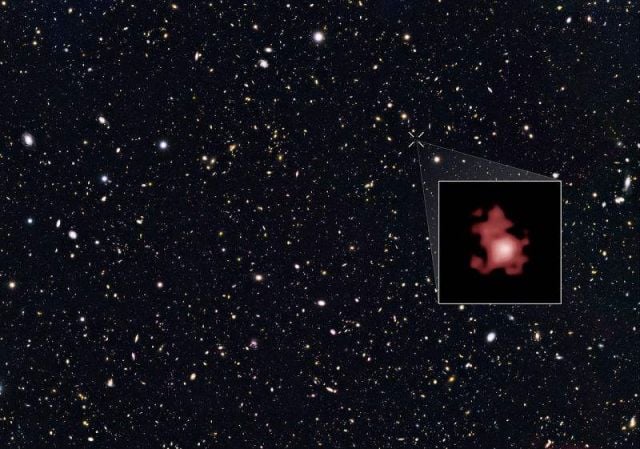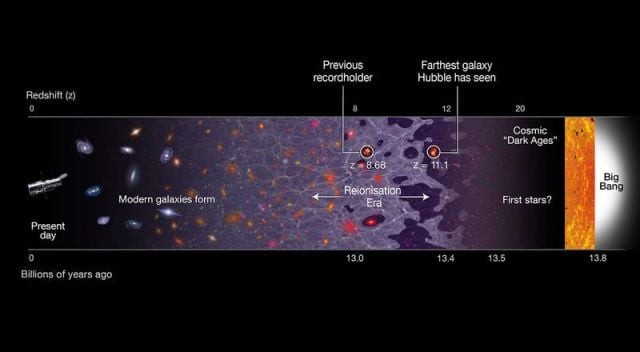Hubble space telescope spots the most distant galaxy yet, existed just 400 million years after the Big Bang, breaking cosmic distance record.
Astronomers by using the NASA/ESA Hubble Space Telescope to its limits, have shattered the cosmic distance record by measuring the distance to the most remote galaxy ever seen in the Universe. This galaxy existed just 400 million years after the Big Bang and provides new insights into the first generation of galaxies.
This video shows a zoom on the galaxy GN-z11, the most distant galaxy discovered so far. This remote galaxy existed only 400 million years after the Big Bang and belongs to the first generation of galaxies in the Universe:
This is the first time that the distance of an object so far away has been measured from its spectrum, which makes the measurement extremely reliable. The results will be published in the Astrophysical Journal.
Previously, astronomers had estimated GN-z11’s distance by analysing its colour in images taken with both Hubble and the NASA Spitzer Space Telescope. Now, for the first time for a galaxy at such an extreme distance, the team has used Hubble’s Wide Field Camera 3 (WFC3) to precisely measure the distance to GN-z11 spectroscopically by splitting the light into its component colours.
Gabriel Brammer of the Space Telescope Science Institute and second author of the study, explains:
“Our spectroscopic observations reveal the galaxy to be even further away than we had originally thought, right at the distance limit of what Hubble can observe.”
Images crediy NASA, ESA, and G. Bacon (STScI)
source spacetelescope







Leave A Comment